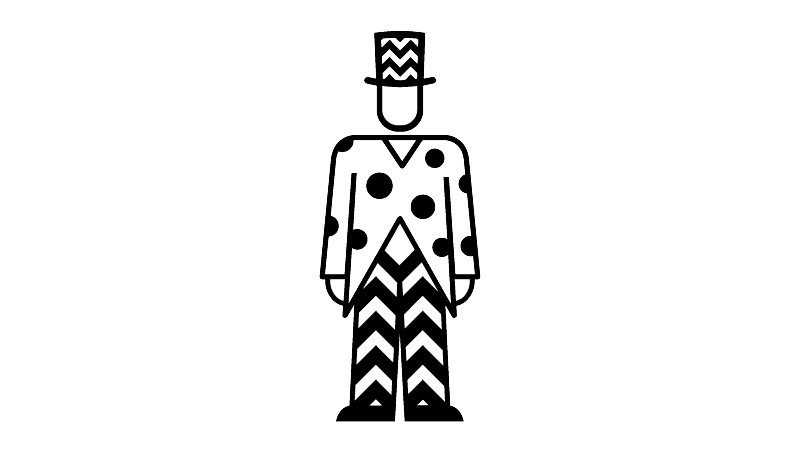Games
Texturing artist
Also known as: Texture artist

What does a texturing artist do?
Texturing artists make 3D models believable by mapping textures onto the object’s surfaces. They also add an extra dimension with imperfections – rust to oil cans, scuffs to trainers, rips to fabric and reflections to windows.
They are concerned with making surfaces realistic, to help the player forget that they are in a computer-generated world. They may use a combination of hand painting, photos, digital and 3D art to create unique custom textures. They use materials, shaders, mapping and an understanding of how these interact and respond.
Watch and read
What’s a texturing artist good at?
- Using software: create artwork using a range of programmes and know the latest technologies and techniques
- Using game engines: implement art into game engines, understanding their technical constraints and possibilities
- Knowledge of materials: understand how they behave in different conditions, what they look like and use of shader tools
- Art: have strong artistic ability, understand form, colour, texture, and light and know how these elements work together
- Collaboration: work with the other artists as well as other games development staff such as designers and programmers
- Organisation: work within the production schedule, manage files and meet deadlines
Tools of the trade
These are some of the tools used by professionals but you can develop your skills using free software. Go to Build your games portfolio for a list.
- Image editing software (Adobe Photoshop)
- 3D painting software (Mudbox, ZBrush, Substance Painter, Substance Designer, Quixel)
- Games engines (Unity, Unreal)
Who does a texturing artist work with?
Texturing artists work with all the other members of the art department – the concept artists, environment artists, modelling artists and so on – as well as designers but also programmers. They usually report to the art director.
How do I become a texturing artist?
At school or college:
Learning traditional drawing, painting and sculpting is useful as a way to demonstrate artistic flair outside software.
If you want to go to university, it would be useful to take A-levels or Highers in:
- Art and design
- Graphic design
- Graphic communication
Or you might want to take any of the following vocational Level 3 qualifications:
- BTEC Diploma/Extended Diploma in Art and Design
- UAL Diploma/ Extended Diploma in Art and Design
- BTEC Extended Diploma in Creative Digital Media Production
- OCR Cambridge Technical Diploma in Art and Design (Graphic Design)
- BTEC Diploma in Graphics
If you can add some physics or computer science into the mix, that will give you a rounded set of skills that are ideal for a career in games.
If you want to straight into a job or apprenticeship, these Level 3 qualifications will equip you with relevant skills:
- Aim Awards Diploma/Extended Diploma in Games Animation and VFX
- AQA Technical Level Entertainment Technology: Video Games Art and Design/Design Production
- OCR Technical Diploma in Digital Media (Digital Content for Interactive Media)
- AQA Technical Level IT: Programming
- OCR Technical Diploma in IT (Digital Software Practitioner)
- BTEC Diploma in Computing for Creative Industries
Build a portfolio:
Learn the software, experiment with games engines and start creating work that you can show to admissions tutors or employers. This is essential. Go to Build your games portfolio to learn how.
Start modding:
Create a level of a game using software provided by the publishers.
Look for an apprenticeship:
You’re unlikely to find an apprenticeship as a concept artist/3D modelling artist/environment artist/texturing artist in the games industry but you might find a role as a junior 2D artist that could equip you with some of the skills that you need. It might be worth taking up that role and moving into games concept art/3D modelling/environment/texturing at a later point. Check out What’s an apprenticeship? to learn more about apprenticeships and Find an apprenticeship to learn how to find one in your region, or approach companies directly. Go to ScreenSkills information on games apprenticeships for the main apprenticeship schemes in games.
Get a degree:
Most people in the games industry have a degree. Get one in games art, graphic design or any 3D digital art. Have a look at ScreenSkills’ list of recommended courses in games. We recognise courses with our ScreenSkills Select award where they offer training in the relevant software, dedicated time to building a portfolio and have strong links with the games industry.
Network:
Get to know people in the games industry by attending events, including games conferences and expos. Meet professionals and ask them questions about their work, while demonstrating interest and knowledge in the industry. Offer to provide them with your professional contact details and try to stay in touch with them. Go to Network well to learn how to do this.
Search for jobs:
Use the UK Games Map to find out if there are games companies near you, then go to their websites directly and check out their open roles. You could also check out the ScreenSkills jobs board. Some employers will take on a junior texturing artist if they have a strong portfolio, showing creativity, flair and software skills.
Look outside games:
It’s also worth considering computer artist roles in any other industry as using similar software will build up your skills. You can use this and any professional artwork you produce to continually improve your games art portfolio, putting you in a stronger position for an entry-level role in games.
You might also be interested in…
Being a 3D modelling artist or an environment artist in the games industry. You might also be interested in being a modelling artist, texture artist or an environment artist in visual effects (VFX), or a modeller in the animation industry.







